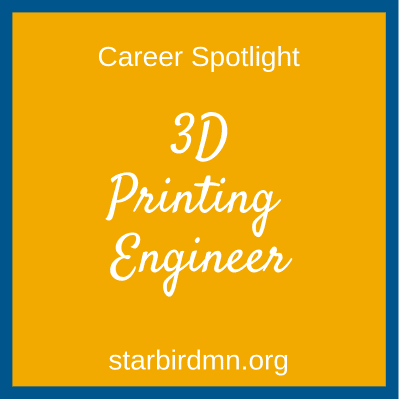
3D printing (also known as Additive Manufacturing) is a process used to build three-dimensional objects by stacking successive layers of raw materials until the object takes the desired form. The layers are determined by computer-aided software which follows a virtual 3D blueprint as well as technical specifications needed for fabrications, including measurements (length, width and height) of each layer.
Why are 3D printing skills important?
As far back as 2015, 35% of engineering jobs required 3D printing skills.
What does a 3D Printing Engineer do?
As this career is still in its infancy, these job descriptions are still being written. For starters, program, maintain, operate and monitor 3D printing manufacturing processes.
Industries that use 3D printing/additive manufacturing include:
- Medical devices (Medtronic)
- Space Exploration (Relativity Space)
- Aerospace (Boeing, Stratasys)
- Dental (Delta Dental)
What kind of training and education do you need to be a 3D Printing Engineer?
There is no degree in 3D Printing Engineering at this time (Oct 2018). 3D printing itself is an on-the-job training skill. With 3D printer prices becoming more affordable, it’s conceivable that the general public can get one and learn the basics of 3D printing.
The University of Minnesota has a single course on Additive Manufacturing. MIT has an 11 week continuing education course on Additive Manufacturing.
Education in an engineering or computer science discipline would provide valuable skills. Consider specific majors like Mechanical Engineering, Software Engineering, Animation & Design, Materials Science, Manufacturing Engineering or Electrical Engineering.
What kind of job outlook is there for 3D Printing Engineers?
As of Oct 21, 2018, there are 2,715 job openings listed on LinkedIn when searching the term “3D Printing.”

